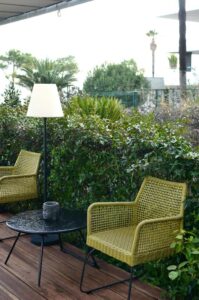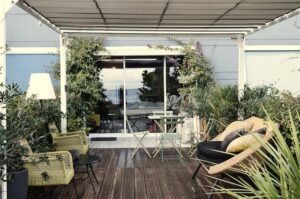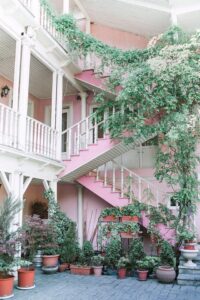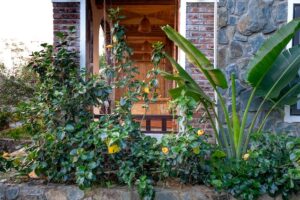 Backyard design ideas should not only suit the exterior appearance of the house but also create a usable yard space for residents. No matter how big a backyard is, it can at least provide a nice place to sit outside. If plant boxes and a garden are added, flowers or vegetables can be part of many backyard design ideas.
Backyard design ideas should not only suit the exterior appearance of the house but also create a usable yard space for residents. No matter how big a backyard is, it can at least provide a nice place to sit outside. If plant boxes and a garden are added, flowers or vegetables can be part of many backyard design ideas.
An organized look with yard space divided into zones or zones works even for small backyards. For example, if the yard has only a small porch and a limited area of grass, separate areas for seating and lawn can be created to give the outdoor space function and form. The small section of lawn can look more interesting if it is framed by attractive landscaping. For example, rather than planting shrubs, flowers and small trees directly along fences or property borders, one of the most attractive backyard design ideas for a small yard is to group the plants in tasteful displays at fence corners.
For larger backyards, simple patches of grass can seem unimaginative. A tasteful fountain or birdbath can break up the space in an attractive way. A stepping stone path lined with flowers could create a pleasant path leading from the back door steps to a garage or doorway. When planning backyard design ideas, it is important to think about safety and maintenance issues. For example, a pond could make a striking focal point for a backyard, but it is not an appropriate choice if small children can access it; ponds also require a lot of maintenance to keep them attractive.
Backyard design ideas for gardens should include plants that are easy to care for and thrive in a particular geographic area. Speaking with local nurseries can help find the best shrubs, trees and flowers to plant. Attractive planters for growing potted vegetables or flowers can be placed in a row around a patio edge to create a finished look on a deck.
An outdoor table and chair set is essential for usable backyard design ideas because it allows space to relax and enjoy the yard. Outdoor table sets are also popular for outdoor entertaining and barbecue meals. A good design idea for a backyard barbecue and dining area is to include a small, closed-door, weather-resistant cabinet for storage. The extra storage eliminates the need to go inside the home for items such as dishes, utensils and towels.
Choosing a plot
A common mistake among novice and experienced gardeners is planting more than they can care for. A successful garden plot does not need to be large. A small, well-maintained garden will grow as much or more produce than a larger one that the owner cannot manage well.
Backyard gardeners should choose a sunny location where water is readily available. Most vegetables grow best with plenty of sun. If this is not the case, your garden should have at least 6 hours of sun a day.
 Try to select a location with good, substantial terrain. Good garden soil is deep, loose, fertile, has good drainage, is rich in organic material and has a neutral pH. The ideal composition of the organic matter of a garden plot is approximately 5% organic matter, 25% water, 25% air, and 45% mineral matter. If you are planting a garden in a desert area with naturally infertile soil, work to improve the soil.
Try to select a location with good, substantial terrain. Good garden soil is deep, loose, fertile, has good drainage, is rich in organic material and has a neutral pH. The ideal composition of the organic matter of a garden plot is approximately 5% organic matter, 25% water, 25% air, and 45% mineral matter. If you are planting a garden in a desert area with naturally infertile soil, work to improve the soil.
Prepare your land
Although organic material only makes up 5% of the “ideal formula” for good growing soil, directly applying organic matter to your soil can make a big difference.
Almost all soils, whether clay, sandy or humus, benefit from the addition of organic matter. Spread a layer of organic matter 5 to 7 centimetres thick on the surface of the soil and incorporate it 15 to 18 centimetres deep. Organic matter breaks down the clay allowing air and water circulation, and helps maintain water in sandy soils. Good sources of organic matter include straw, firewood sticks, leaves, bog moss, sawdust, grass clippings, and compost.
Organic matter will reduce nitrogen as it decays. Add nitrogen fertilizer to the organic matter to aid the decomposition process. This addition of nitrogen is not intended to aid future plant growth but rather to act as an aid to decomposition. More nitrogen fertilizer will be required when you begin planting. You will want to allocate one pound of ammonia sulfate, 2/3 pound of ammonium nitrate, or ½ pound of urea for every inch of organic matter placed on 30 square meters of land. As a warning, if you are using well-rotted compost as organic matter, reduce the amount of nitrogen fertilizer you apply by half.…


 Planning
Planning Keep in mind that different seasons are ideal for different plants to grow. For instance, kale and miltonia prefer cool temperatures, but tomatoes prefer warm temperatures. Certain plants, like sunflowers and lettuce, do best when grown from seed. To increase your chances of success, always research the plant you plan to plant.
Keep in mind that different seasons are ideal for different plants to grow. For instance, kale and miltonia prefer cool temperatures, but tomatoes prefer warm temperatures. Certain plants, like sunflowers and lettuce, do best when grown from seed. To increase your chances of success, always research the plant you plan to plant.